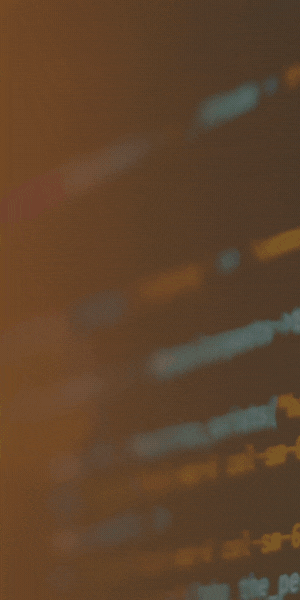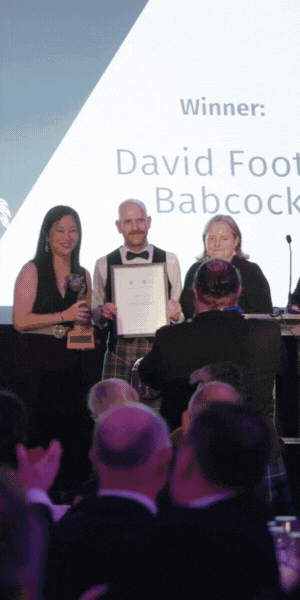The Naval Architect: July/Aug 2018
Halls of noble knights, armours and long swords, magnificent frescoes framing loopholes and battlements scarred from centuries past were the ideal crucible provided by the breathtaking Castello di Pavone for the alchemy that was to take place during COMPIT 2018. More than ever, the lucidity and depth of reflection directed at the all-too-practical issues and questions raised by big data, IoT, simulation, virtual & augmented reality and objective computational limitations will make the COMPIT 2018 proceedings essential reading for those that couldn’t be there.
The widening gap between available technology, its implementation and the current users’ cultures was one of the key considerations. UCL’s David Andrews emphasised the need for better planning of the ship platform in order for fewer, more multi-tasking crew. Herbert Koelman and Bastiaan Veelo of SARC noted improved techniques to provide ‘watertight’ surface models for analysis, simulation, Virtual (VR) and Augmented Reality (AR) was facilitating their integration into the everyday workflow. Meanwhile, Ali Ebahimi et al. of Ulstein International explained how the company has made practical use of Big Data by benchmarking portions of the design space against relevant data sets; achieving 95% accuracy against the traditional full ship approach and achieving huge time savings by bridging the Concept and Basic design phases.
Game changers
Henrique Gaspar (NTNU) presented on the creation of a “library for open and collaborative data-driven ship design” reminiscent of open-source software initiatives. This was later expanded into a ‘Taxonomy for Simulation’ by Fonseca et al. and taken a step further by Koch et al., who discussed the SHIPLYS project’s aim of at making “otherwise unaffordable resources” available to SMEs as REST-based services. Crucially, Gaspar stressed the need for data “to be communicated between participating software components”, a call hitherto ignored by most software houses. Enter Fischer et al. with a combined parametric-discrete strategy to estimate, track and manage costs in a multi-connected approach. There was also a parallel risk-management initiative to allow FE data visualisation and review using smartphones by Son et al. of the Korean Register.
A session dedicated to smart simulation was led off by Sefan Harries of Fienship Systems, who presented a “web App for geometric modelling and design of propellers” made available “via a standard web browser” (www.holiship.eu/approach). Quoting George Box’s famous aphorism that “all models are wrong but some are useful”, HydoComp’s Don MacPherson offered a reliable, simplified simulation model for propellers. The session was capped by a powerful reminder from Denis Morais of SSI that digital twins must include IoT sensors, information about all processes from design to operation, and identification of the purpose thereof. Moreover, the paradigm shift in supply from equipment to services will require sharing of data currently “locked in silos” to ensure overall performance.
Several papers discussed digital models, twins and their use in Classification procedures and throughout the life cycle of the ship. Christian Cabos of DNV GL discussed the “behavioural model”, Jan Van Os, VP of Marine Industry, Siemens, identified Class as “the only supplier in the whole value chain” involved from start to end, while Lukas Niepert proposed a Class-approval process workflow, an initiative expanded on by Ulrike Moser et al. (DNV GL) via the DEX Form schema definition based on W3C standard for XML and offering the unique identification of objects (in the model) as well as preserving information about ownership.
Peter de Vos of TU Delft presented research on the use of automatic topology generation based on genetic algorithms to explore design space for energy distribution systems. Jeroen Wackers (Ecole Central de Nantes) et al. boldly bridged design space exploration, focused simulation and, to some extent, Big Data via a very interesting, always-converging, multi-fidelity approximation that uses “the sum of a low-fidelity-trained metamodel” and, perhaps crucially, the delta “between high- and low-fidelity evaluation”. Auke van der Ploeg (Marin) et al. explored yet unexplained misalignments between computationally low- and high-cost hull shape optimisation.
Smart Yards and Machine learning
Gunawan et al. of Hiroshima University presented work on reducing the cost of engine rooms by optimising arrangements using a modular approach that includes layout and analogous parameters among ship of different sizes. Anne Fischer (Fraunhofer IGP) et al. introduced an innovative approach to objectively tracking building progress in the shipyard by using pictures and videos taken with common video equipment, down to tablets and smart phones, fixed and hand-held. Yong-Kuk Jeong (SNU) et al. produced further work on simulating a shipyard via a Discrete Event Simulation approach, and Jong Hun Woo (KMOU) et al. discussed using Deep Learning algorithms to support machine learning in shipyards, written in the evergreen Python coding language. One interesting aspect of this research resides in the potential analogy with the Deep Learning approach advocated by Chess Master Gary Kasparov in his proposal to combine human creativity and machine computational power.
Rodrigo Perez Fernandez (SENER) poignantly noted that some 85% of the 2.5 quintillion bytes of data produced daily are invisible to legacy information systems, a topic dear to the writer for a long time (Danese, COMPIT 2008). This constitutes a major challenge for practical initiatives based on Big Data and empirical data such as the idea of Stein Ove Erikstad’s (SAP Fedem) et al. to “use design patterns to describe reusable solutions template” applicable to “different classes of marine systems and operation problems”. This paper has the additional merits of recalling the seminal work by Erich Gamma et al. (otherwise known as the ‘Gang of Four’), pointing out that design patterns also reveal differences and finally recognising that digital twins should be seen as “opportunity makers”. Equally noteworthy notice is Zou Guangrong’s work on combining Big Data and Artificial Intelligence, analogue to Deep Thinking, and identifying that “future twins will be digital by design” as opposed to twins identical to their physical counterparts.
Training and navigation
Volker Bertram (DNV GL) et al dissected the definition of VR and provided a comprehensive survey of currently available VR options for maritime training, their pros and cons, applicability and relative cost, as well as a sobering review of the outcome of a few recent development projects. One more successful initiative was discussed by Nikolaj Meluzov (TUHH) dealing with “a toolkit for AR-based service instruction modules”, including CAD models, the fundamental what/where/when/how questions and, for the perhaps the first time, feedback. On a more promising note, Guillaume Jacquenot (Sirehna) reported constructive results in the application of VR to CFD, effectively plunging the viewer into a flow field, the aim being to allow the study of 3D phenomena from the inside.
The seldom heard of concept of just-in-time operation – changes to speed and course – and the importance of unloaded voyages is related to GHG emissions by Toshiyuki Kano, (National Maritime Research Institute, Tokyo), who identified the propulsion plant’s condition as a common culprit in efficiency losses. Hideo Orihara et al. (JMUC) expanded on this by calling for more ships optimised to the weather conditions of their expected principal operational theatre and, conversely, to use real-time weather data (local and to destination) to continually fine-tune planned routes. Waiting for weather windows is also advocated and could lead to fuel savings of up to 30%. Taking the collaborative approach a stage further, Andrea Orlandi (of the Tuscany-based LaMMA Consortium) et el. called for ‘nowcasting’, that is ships transmitting real-time weather and related data to each other and to a communal weather mapping and predicting base station. Waiting for favourable weather windows and improved routing are estimated to account for up to 16% reduction in wave resistance and fuel savings of 10%.
Many dramatic collisions involving high-profile ships have been reported in recent months, but far more and far worse incidents never make the news. Stephan Procee (Maritiem Instituut Willem Barentsz) discussed an ecological interface that uses AR with the aim of improving the ability to distinguish potentially dangerous targets threatening the Ship’s Domain (Protected Zone) from the rest. A creative line was taken by Marius Brinkmann (University of Oldenburg) in combining a real vessel and its real-time navigation condition with a simulated environment, for risk-free testing of collision avoidance systems. For an idea clearly oriented towards autonomous ships, the very recent high-accuracy positioning satellite network Galileo is used by Agnes U. Schubert, (University of Applied Science, Wismar) et al. to provide a Navigation Assistance System offering dynamic support to situation assessment, a task currently carried out by bridge officers.
Unmanned ships and AI
Legislative and insurance bodies have now entered the arena of unmanned ships, driving the distinction between unmanned and autonomous vessels, floating and submerged. Mikael Lind (RISE Viktoria, Gothenburg) et al. highlighted the exponentially increasing congestion of routes and, critically, port areas – a recent statistic puts at 100,000 the number of sea-going cargo ships – and a new Sea Traffic Management system defined on modern technology is being called for by Swedish authorities. Jukka Merenluoto (DIMECC. Finland) also noted “the development of new technology opens new opportunities, which need social change to be accepted and taken into use”. There might be grounds to argue the presented view that “transition from the conventional vessels will take time as the lifespan of the existing fleets are long” which would however lend more substance to their call for the ‘One Sea’ initiative (see March 2018’s The Naval Architect). Also very future looking, Kohei Matsuo (NMRI, Tokyo) reviewed ‘Technology Mega-Trends that will Change Shipbuilding’ concluding, somewhat surprisingly, that “ultimate customisation and shift to service business” tops the list.
In ‘Demystifying Artificial Intelligence for Maritime Applications’, Bertram reviewed what AI currently means, while Christos Gkerekos (University of Strathclyde) presented data driven fuel consumption modelling aimed at reducing the “25% of the vessel’s overall running costs” it represents. Jing Xie (DNV GL) presented research aimed at identifying structural cracks by applying neural networks to drone-taken photographs during surveys, while Henrik Holm (RISE Viktoria) highlighted the need to decode massive amounts of AIS data in faster ways to make it more relevant to its consumers.
Among other highlights, the DNV GL COMPIT Award 2018 was bestowed upon Stefan Harries in recognition of his many achievements throughout his ongoing distinguished career.
You can find all the full papers presented at this year’s event at: http://data.hiperconf.info/compit2018_pavone.pdf





